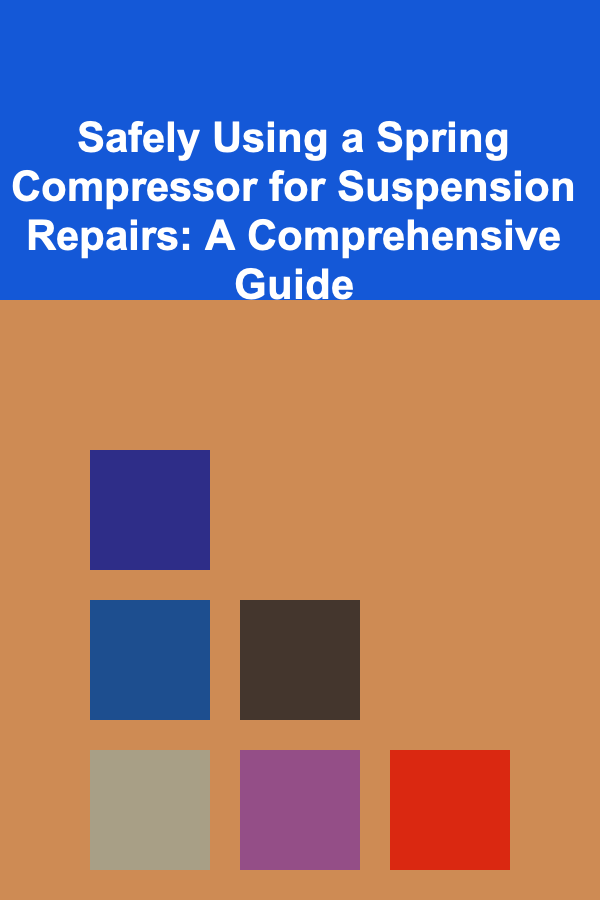
How to Analyze Your Alcohol and Tobacco Expenses for Insight
ebook include PDF & Audio bundle (Micro Guide)
$12.99$11.99
Limited Time Offer! Order within the next:
Not available at this time

The consumption of alcohol and tobacco has long been ingrained in various cultures worldwide. While moderate use is often viewed as part of social rituals or personal leisure, these habits can also become significant financial burdens if not managed carefully. For those who want to gain insight into their spending habits and make smarter financial decisions, analyzing alcohol and tobacco expenses is a crucial step. This article will guide you through the process of analyzing your alcohol and tobacco expenses, understanding the underlying patterns, and discovering ways to save money or improve your financial situation.
Why You Should Analyze Your Alcohol and Tobacco Expenses
Before diving into the process, it's important to understand why analyzing alcohol and tobacco expenses is a valuable exercise.
Emotional and Social Factors
Both alcohol and tobacco are often linked to socializing, relaxation, or emotional stress relief. These emotional triggers may cause individuals to overlook how much they are spending on these items. Analyzing your spending habits can help you identify whether these purchases are emotionally driven, habitual, or truly necessary.
Financial Implications
For many individuals, alcohol and tobacco represent non-essential expenses that could be better allocated elsewhere. The money spent on alcohol and tobacco may add up over time and could be invested in more fruitful ventures such as savings, retirement plans, or even better health choices.
Health Considerations
Beyond the financial aspects, the cost of alcohol and tobacco should be viewed in terms of their impact on health. These substances are associated with numerous health risks, including lung disease, heart disease, and addiction. Understanding the cost of these habits can help provide motivation for healthier alternatives.
Step-by-Step Guide to Analyzing Your Alcohol and Tobacco Expenses
The process of analyzing your alcohol and tobacco expenses can be broken down into several straightforward steps. By tracking your spending over a period of time, you can uncover patterns and identify areas where savings may be made.
1. Track Your Spending
The first step in understanding how much you're spending on alcohol and tobacco is to track your purchases. This will give you a clear picture of how often and how much you're spending on these products.
- Use a Budgeting App: Apps like Mint, YNAB (You Need a Budget), or PocketGuard allow you to categorize and track expenses automatically. You can set specific categories for alcohol and tobacco.
- Manual Tracking: If you prefer, you can manually keep a record of every purchase related to alcohol and tobacco in a spreadsheet or a physical notebook.
- Set a Timeframe: Ideally, track your expenses over the course of a month or three months to get a realistic sense of your average spending.
2. Categorize Your Purchases
Once you have a record of your spending, break down the purchases into subcategories to understand where your money is going. This can include:
- Alcohol Types: Beer, wine, spirits, cocktails, or specialty drinks.
- Tobacco Products: Cigarettes, cigars, smokeless tobacco, vaping products.
- Occasions: Spending on alcohol and tobacco may vary depending on whether it's for social events, casual at-home consumption, or a more habitual purchase.
- Frequency: How often do you buy alcohol or tobacco? Are these impulse purchases or part of a regular routine?
Categorizing your purchases helps you to see what types of alcohol and tobacco you are buying most frequently and how much you're spending on each item.
3. Analyze the Total Spend
Now that you've broken down your spending by category, it's time to tally up the total. How much are you spending on alcohol and tobacco each week or month?
- Weekly Spend: Multiply your average weekly expenditure on alcohol and tobacco by 4 to get a rough estimate of your monthly costs.
- Yearly Spend: Multiply your monthly spend by 12 to calculate your annual alcohol and tobacco expenses.
This is the "big picture" figure, and it may be startling to see how much money you're allocating to these habits.
4. Identify Patterns and Trends
With the total spend calculated, it's time to dig deeper into patterns and trends.
- Social vs. Solo Drinking: Is your spending on alcohol higher during weekends or social events? If so, this could indicate that much of your spending is driven by social occasions rather than personal enjoyment.
- Brand Loyalty: Do you tend to buy the same brands of alcohol or tobacco consistently? Premium brands may cost more and could be an area for potential savings.
- Impulsive Purchases: Are you buying alcohol and tobacco out of habit or impulse? Identifying situations where these purchases are impulsive or unnecessary is a powerful tool for reducing costs.
- Seasonal Variations: Does your spending on alcohol and tobacco vary throughout the year? Some people tend to drink more during holidays or vacations, which may cause spikes in spending during certain times.
5. Compare Against Your Budget
After analyzing your alcohol and tobacco spending, compare these figures to your overall budget. Are these expenses eating into your savings or causing strain on your finances? If so, it may be time to reassess how much you're willing to allocate to these habits.
If your alcohol and tobacco expenses are too high compared to your budget, this could highlight the need for change or a more mindful approach.
How to Identify Areas for Improvement
Once you've analyzed your alcohol and tobacco expenses, the next step is to identify areas where you can reduce spending or improve your habits.
1. Set Clear Goals
What do you want to achieve by cutting back on alcohol and tobacco? Your goal could range from saving a certain amount of money to improving your health.
- Financial Goals: For example, if you're spending $200 per month on alcohol and tobacco, you could aim to reduce this by 25% or $50 per month.
- Health Goals: Setting a goal to quit smoking or drink less frequently could have both financial and health benefits.
2. Cut Back Gradually
Reducing alcohol and tobacco consumption doesn't have to be an all-or-nothing endeavor. Gradually cutting back can make the transition easier and more sustainable.
- Alcohol: If you're accustomed to drinking several times a week, consider cutting back to once or twice per week. Try swapping alcoholic beverages with non-alcoholic alternatives or water.
- Tobacco: Gradually reduce the number of cigarettes you smoke each day, or substitute with nicotine patches or gum.
3. Find Cheaper Alternatives
Switching to less expensive alternatives can help reduce spending without sacrificing the experience of drinking or smoking.
- Alcohol: Look for cheaper but still high-quality alternatives. Opt for domestic beers instead of imported ones or explore lesser-known wine brands.
- Tobacco: Consider switching to cheaper cigarette brands or trying alternatives like smokeless tobacco products or vaping, though these come with their own set of risks.
4. Cut Out Impulse Purchases
One of the easiest ways to reduce alcohol and tobacco expenses is to cut out impulse buys. This may involve:
- Planning Ahead: Avoid purchasing alcohol or tobacco on a whim. Set a clear shopping list or plan your social events in advance.
- Avoiding Temptation: If you find yourself buying alcohol or tobacco when out shopping, try leaving your wallet at home or switching to online shopping to prevent impulse buys.
5. Track Progress Over Time
Once you've made changes to your habits, continue tracking your alcohol and tobacco expenses to measure the impact of these changes. If you're successfully cutting back, it will be easier to allocate the savings to more meaningful financial goals, like paying down debt or saving for a vacation.
Long-Term Benefits of Analyzing Your Alcohol and Tobacco Expenses
Beyond the immediate financial benefits, analyzing your alcohol and tobacco spending can lead to broader long-term advantages:
1. Improved Financial Health
Cutting back on alcohol and tobacco expenses frees up money that can be put toward other financial goals, such as saving for retirement, buying a home, or building an emergency fund.
2. Healthier Lifestyle
Reducing alcohol and tobacco consumption is one of the most effective ways to improve your overall health. Cutting back can lead to better physical fitness, improved mental well-being, and reduced health risks.
3. Better Decision-Making
Once you gain insight into your spending habits, you're more likely to make better financial decisions. You'll be more aware of how your habits influence your budget and be in a stronger position to manage your finances more effectively.
4. Increased Savings
By reallocating the money you would have spent on alcohol and tobacco, you can build a stronger savings foundation. Whether it's saving for a vacation, purchasing a large item, or investing in your future, this extra savings can make a significant difference over time.
Conclusion
Analyzing your alcohol and tobacco expenses is a powerful way to gain insight into your spending habits and make better financial decisions. By tracking, categorizing, and reviewing your purchases, you can identify areas for improvement, cut down on unnecessary expenses, and ultimately make healthier and more financially responsible choices. This process not only helps you save money but also encourages a healthier lifestyle and improved long-term financial security.

How to Create a Minimalist Living Room for Calmness
Read More
How to Discover Novels with Rich Historical Detail
Read More
How to Refinance Your Home Loan for Better Financial Flexibility
Read More
Safely Using a Spring Compressor for Suspension Repairs: A Comprehensive Guide
Read More
Interpreting Mythological Gardens and Groves: A Journey Through Symbolism and Meaning
Read More
How to Prepare for a Deposition: A Step-by-Step Guide
Read MoreOther Products

How to Create a Minimalist Living Room for Calmness
Read More
How to Discover Novels with Rich Historical Detail
Read More
How to Refinance Your Home Loan for Better Financial Flexibility
Read More
Safely Using a Spring Compressor for Suspension Repairs: A Comprehensive Guide
Read More
Interpreting Mythological Gardens and Groves: A Journey Through Symbolism and Meaning
Read More